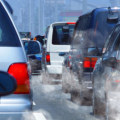The transportation industry plays a critical role in global commerce and daily life, enabling the movement of goods and people across cities, countries, and continents. However, this essential sector has a profound impact on the environment, contributing significantly to air pollution, greenhouse gas emissions, habitat destruction, and resource depletion. From automobiles and trucks to ships, trains, and airplanes, all modes of transportation rely on energy-intensive systems that affect ecosystems and accelerate climate change. As the demand for transportation continues to grow, understanding its environmental impact is crucial in developing sustainable solutions that balance economic progress with environmental responsibility.
Air Pollution and Greenhouse Gas Emissions
One of the most significant environmental consequences of the transportation industry is air pollution. Vehicles powered by gasoline and diesel engines release pollutants such as nitrogen oxides, carbon monoxide, and particulate matter, all of which contribute to smog, respiratory illnesses, and degraded air quality. The burning of fossil fuels also produces carbon dioxide (CO₂), the leading greenhouse gas responsible for climate change. The transportation sector accounts for nearly a quarter of global CO₂ emissions, with road vehicles such as cars, buses, and trucks being the primary contributors. Air travel and maritime shipping also release large amounts of carbon dioxide and other pollutants, particularly in regions with high traffic volumes. As these emissions accumulate, they trap heat in the Earth’s atmosphere, leading to rising temperatures, extreme weather conditions, and disruptions to natural ecosystems. One of the most significant environmental consequences of the transportation industry is air pollution. Vehicles powered by gasoline and diesel engines release pollutants such as nitrogen oxides, carbon monoxide, and particulate matter, all of which contribute to smog, respiratory illnesses, and degraded air quality. The burning of fossil fuels also produces carbon dioxide (CO₂), the leading greenhouse gas responsible for climate change. The transportation sector accounts for nearly a quarter of global CO₂ emissions, with road vehicles such as cars, buses, and trucks being the primary contributors. Air travel and maritime shipping also release large amounts of carbon dioxide and other pollutants, particularly in regions with high traffic volumes. As these emissions accumulate, they trap heat in the Earth’s atmosphere, leading to rising temperatures, extreme weather conditions, and disruptions to natural ecosystems.
Impact on Water and Soil Quality
Transportation activities contribute to water and soil pollution through fuel spills, oil leaks, and improper disposal of hazardous materials. Roads and highways often have runoff that contains toxic chemicals, heavy metals, and microplastics, which eventually seep into rivers, lakes, and groundwater supplies. Maritime transport, which is responsible for moving a significant portion of global goods, releases ballast water that can introduce invasive species into fragile marine ecosystems. Oil spills from tanker accidents can have devastating long-term effects on coastal environments, contaminating water supplies, killing marine life, and disrupting fisheries. The construction of roads, airports, and rail networks often leads to soil erosion, deforestation, and habitat destruction, further contributing to environmental degradation.
Habitat Destruction and Land Use Changes
The expansion of transportation infrastructure requires significant amounts of land, leading to the destruction of natural habitats and loss of biodiversity. Roads, highways, and railways fragment ecosystems, making it difficult for wildlife to migrate and access resources. In urban areas, the construction of highways and airports often leads to deforestation and the displacement of communities. Wetlands and coastal areas, which serve as natural buffers against storms and flooding, are frequently altered or drained to make way for transportation projects. This disruption of natural habitats not only threatens wildlife populations but also reduces the ability of ecosystems to absorb carbon dioxide and regulate climate patterns.
Energy Consumption and Resource Depletion
The transportation industry is one of the largest consumers of fossil fuels, relying heavily on non-renewable energy sources such as gasoline, diesel, and aviation fuel. The extraction, refinement, and transportation of these fuels require vast amounts of resources and generate additional environmental pollutants. The production of vehicles, ships, and airplanes also consumes significant amounts of raw materials, including metals, rubber, and plastics. As global demand for transportation increases, the depletion of these resources accelerates, putting additional pressure on ecosystems and contributing to environmental degradation. The shift toward electric vehicles, biofuels, and alternative energy sources is seen as a potential solution to reduce the industry’s reliance on fossil fuels and lower its environmental footprint.
Sustainable Solutions and Storage Considerations
Efforts to minimize the environmental impact of the transportation industry have led to advancements in fuel efficiency, the adoption of electric and hybrid vehicles, and the development of more sustainable infrastructure. Public transportation systems, bicycle lanes, and pedestrian-friendly urban planning can reduce reliance on personal vehicles and decrease overall emissions. Many businesses are also exploring ways to improve supply chain efficiency and reduce unnecessary transportation. Companies that require logistical solutions often use storage units to store goods closer to their final destination, minimizing the need for excessive transportation and reducing carbon emissions associated with long-haul shipping. By strategically using storage facilities, businesses can decrease fuel consumption while maintaining efficient delivery schedules.
The Future of Sustainable Transportation
As the world faces the growing challenges of climate change and environmental degradation, the transportation industry must evolve toward more sustainable practices. Investments in renewable energy, electrification of fleets, and advancements in hydrogen fuel technology are expected to play a critical role in reducing emissions. Governments and businesses are also exploring carbon offset programs and policies that promote green transportation alternatives. While transportation remains a necessity for economic growth and global connectivity, adopting environmentally conscious strategies will be essential in mitigating its long-term impact. By prioritizing sustainable innovations and responsible resource management, the industry can continue to evolve in a way that supports both economic development and environmental protection.







